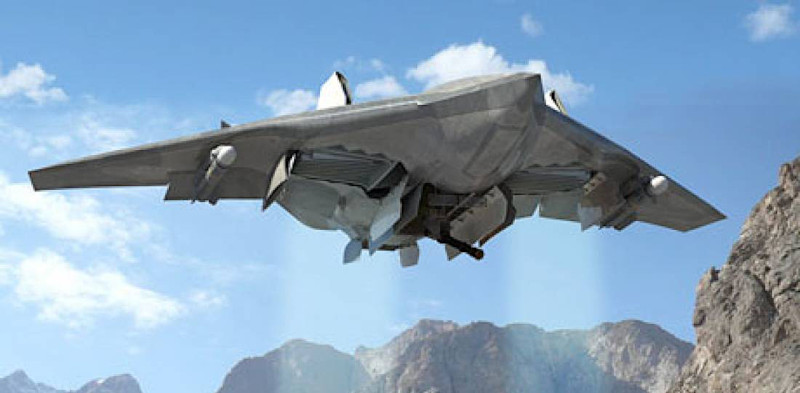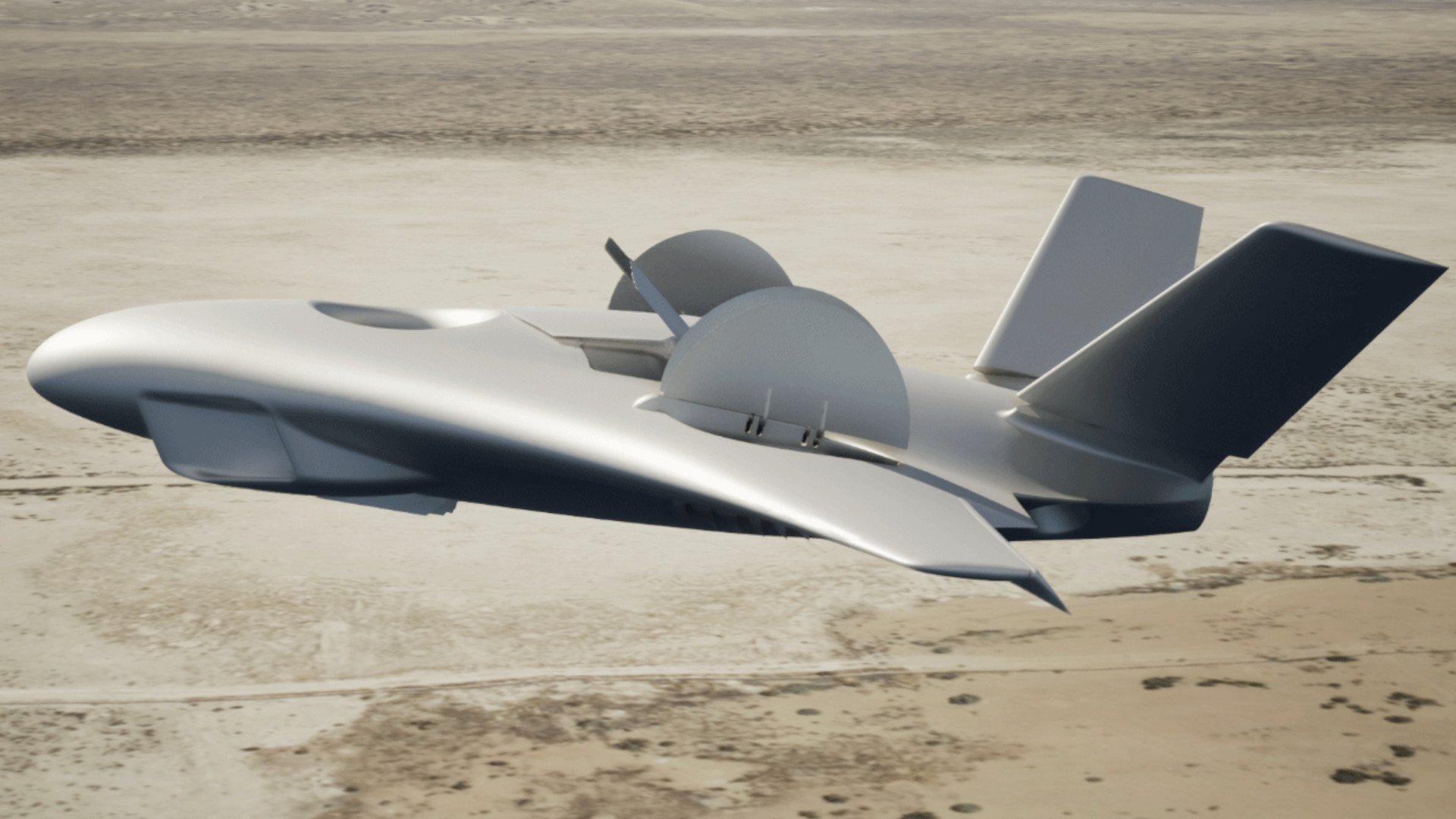Aurora Flight Sciences recently unveiled a revised fan-in-wing vertical take-off-and-landing capable aircraft design it is developing U.S. Defense Advanced Research Projects Agency (DARPA). A key goal behind Aurora’s new demonstrator concept, which is uncrewed and otherwise scaled back from the design it first presented last year, is to provide a realistic pathway to actually flight test the capabilities this platform might offer.
Aurora, a subsidiary of Boeing, has been developing this design under DARPA’s Speed and Runway Independent Technologies (SPRINT). The company was one of four chosen to take part in SPRINT’s initial concept refinement Phase 1A, the others being Bell, Northrop Grumman, and Piasecki Aircraft. In April, Aurora advanced to Phase 1B, which will involve a preliminary design review. Whether any of the other companies involved in Phase 1A have moved forward is unclear.

DARPA says that SPRINT’s main focus is to demonstrate a “transformational combination of aircraft speed and runway independence” that includes “the ability to cruise at speeds from 400 to 450 knots at relevant altitudes and hover in austere environments from unprepared surfaces.” The program is directly tied to U.S. Special Operations Command’s (SOCOM) High-Speed Vertical Takeoff and Landing (HSVTOL) project.
“Aurora’s [new] concept is designed to meet or exceed the challenging program objectives that DARPA set for the program. For example, the blended wing body platform is capable of 450 knot cruise speed, and the embedded lift fans with integrated covers allow a smooth transition from vertical to horizontal flight,” according to a press release the company put out yesterday. “The design also leverages existing engine solutions, shortening development risk and timelines. In addition to VTOL, the aircraft is capable of short take-off and vertical landing (STOVL), super short take-off and landing (SSTOL), and conventional take-off and landing.”
The press release also highlighted the new concept’s “three lift fans, a more refined, composite exterior; and an uncrewed cockpit.” The design Aurora showed last year had four fans and a traditional crewed cockpit area with two air intakes right behind it on top of the fuselage.

On the revised design, the three lift fans are positioned in a triangular arrangement, with one in the nose end and two on either side of the main blended wing body section. There are also two large angular air intakes under the nose instead of on top of the fuselage, along with what looks to be a central exhaust situated at the rear between the aircraft’s v-tail.
An animated rendering Aurora has released, seen below, shows a flat panel sliding over the top of the front lift fan and split circular covers folding down over the ones in the wing areas for level flight operation. There also looks to be doors that close flush to the fuselage underneath. The are two additional auxiliary doors on top of the central fuselage, which may divert air away from the main propulsion system while the design is in its vertical takeoff and landing mode.

It has already been pointed out that there are some very broad similarities between Aurora’s fan-in-wing configuration and that of the 1960s-era Ryan Vertifan design, which you can read more about here. This comparison underscores that fan-in-wing design concepts, as well as ones that utilize lift fans in other locations within an aircraft, are hardly new.


The new Aurora SPRINT concept also has some very general similarities to other designs with only a pair of wing-mounted lift fans that have been presented in the past. This includes Lockheed Martin’s uncrewed Vertical Takeoff and Landing (VTOL) Advanced Reconnaissance Insertion Organic Unmanned System, or VARIOUS, from the 2000s timeframe.

The projected size of Aurora’s current SPRINT design concept and how much payload of any kind it might be able to carry if it progresses to a flyable state is unclear.
“The FIW [fan-in-wing] technology could be scaled to four or more lift fans to meet future aircraft requirements, and it could unlock opportunities for a future family of systems,” Aurora’s press release yesterday noted. “Similarly, while an uncrewed demonstrator offers benefits in testing and risk reduction, the FIW technology would be fully transferrable to traditional aircraft with crews.”
However, “the team’s [current] approach seeks to set the program on the path to successful flight.”
Whether that comes to pass remains to be seen. DARPA X-plane programs do not always meet their goal of producing a flyable demonstrator. Aurora knows this from its time developing the XV-24 LightningStrike for the agency in the 2010s. This was another VTOL concept that featured rows of electric fans in two sets of articulating wings, all powered by a central gas turbine. Despite successful subscale flight testing and plans to fly a full-scale XV-24, DARPA canceled the program in 2018 citing, in part, a lack of a service partner elsewhere in the U.S. military.


That being said, with SPRINT, DARPA has very clear interest from SOCOM and, by extension, Air Force Special Operations Command (AFSOC). A high-speed, runway-independent transport aircraft could provide valuable added operational flexibility and reduced vulnerability, especially in a potential future high-end conflict like one in the Pacific against China, and especially for special operations units. When Aurora unveiled its initial design, The War Zone noted how it evoked a host of other concepts the U.S. military has explored since the 1980s, especially for special operations support missions, as you can read about more in this exhaustive two-part feature.
The kinds of capabilities that SPRINT, or another design derived from the technology being developed under the program, could easily be desirable for applications beyond the U.S. special operations community. The entire U.S. military is increasingly concerned about the vulnerability of large established bases, particularly in the context of a major fight in the Pacific region.
The U.S. Marine Corps is retooling its entire force structure to be better able to conduct expeditionary and distributed operations with a particular emphasis on rapidly establishing forward bases in remote and austere areas. The Marines are also the only service in the U.S. military to operate the B variant of the stealthy F-35 Joint Strike Fighter, which is short takeoff and vertical landing capable thanks to a huge lift fan in the forward fuselage and an articulating rear exhaust nozzle.

With all this in mind, there has been steadily growing interest across the services in new and more capable runway-independent aircraft concepts, crewed and uncrewed, as well as associated tactics, techniques, and procedures, to support a wide variety of missions in recent years.
Altogether it will be very interesting to see how Aurora’s fan-in-wing concept for SPRINT continues to evolve ahead of any potential future flight testing.
Contact the author: joe@twz.com
